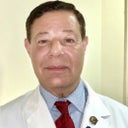Posted underEyelid Surgery q&a
Would I benefit from fat grafts to the lower eye after fat repositioning failed? (photos)
Eye bags previously treated twice using fillers with mixed results/reaction to the filler. Had a lower bleph in Nov '23, fat grafting requested for volume loss but surgeon wanted to avoid due to known risk. Fat repositioning had low survival rate and did not create a smooth result, so fillers were attempted again/severe reaction again. Now surgeon suggesting I return to dissolve then do the fat grafting. if repositioning failed, would grafting have any better chance? any other options?
Answers (5)
From board-certified doctors and trusted medical professionals
Dr. Thomas A. Mustoe, MD, FACS

Dr. Thomas A. Mustoe, MD, FACS
Board Certified Plastic Surgeon
Answer
Dr. C. Blake Perry, MD

Dr. C. Blake Perry, MD
Oculoplastic Surgeon, Board Certified in Ophthalmology
Answer
Dr. Nelson Lee Novick, MD

Dr. Nelson Lee Novick, MD
Dermatologic Surgeon, Board Certified in Dermatology
Answer
Answered on Sep 23, 2024
Answer
Dr. Mats Hagstrom, MD (license on probation)
Dr. Mats Hagstrom, MD (license on probation)
Board Certified Plastic Surgeon
Answer
More Eyelid Surgery Questions
See all Eyelid Surgery Q&AWE SEND PRETTY
EMAILS
What’s trending? Who’s turning heads? Which TikTok myths need busting? We’ve got you. No fluff, no gatekeeping—just real talk. Get our free, unfiltered newsletter.